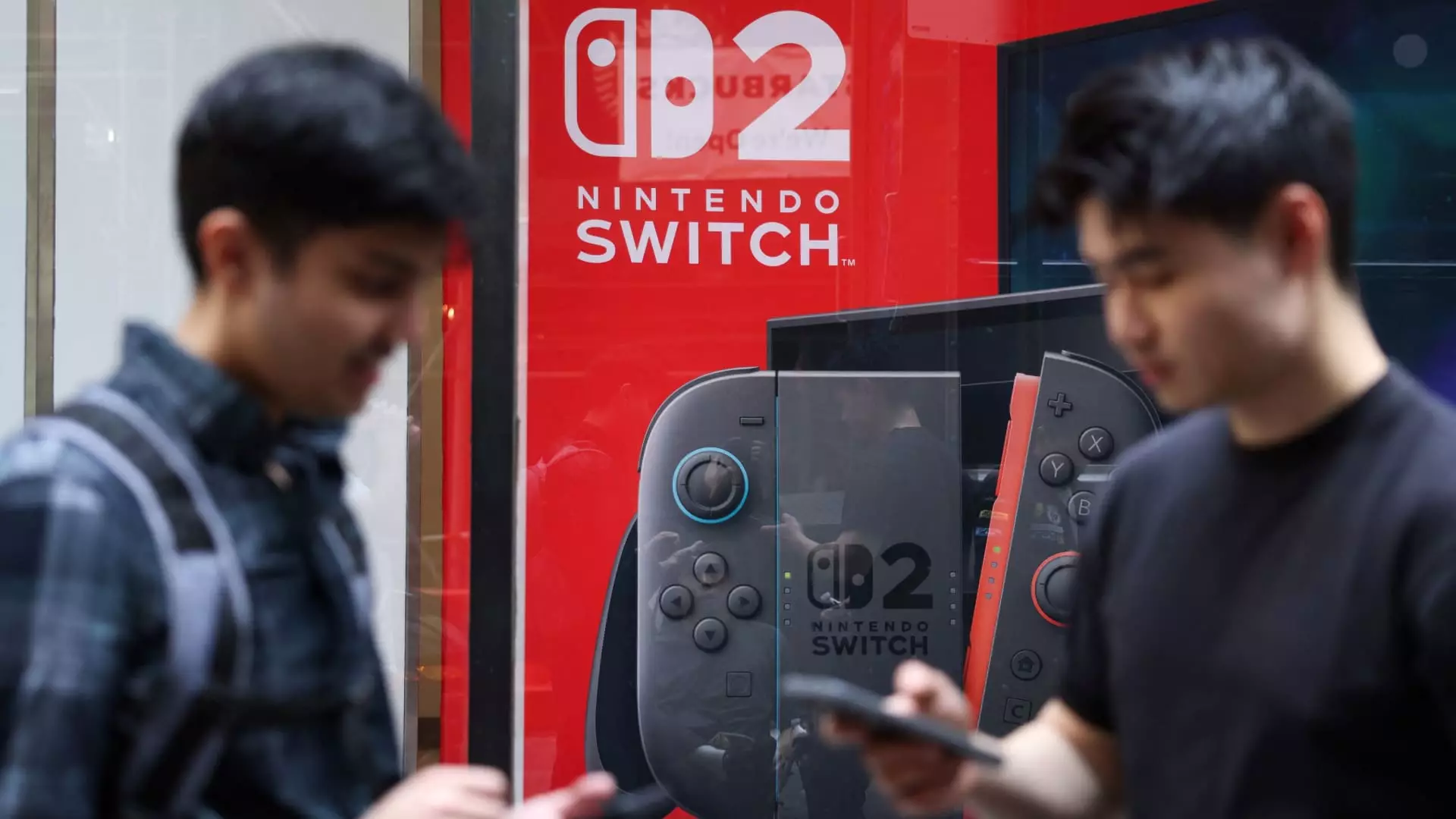The recent launch of the Nintendo Switch 2 has sent ripples of excitement through the gaming industry. As one of the most anticipated gaming consoles, its release has garnered a frenzied response from fans, with some retailers even adjusting their hours to accommodate the demand. However, amid all the hype and ardor surrounding this launch, it’s imperative to examine whether Nintendo’s latest offering represents a true evolution in their gaming portfolio or a superficial reinvention of the wheel.
The Unprecedented Hype: Is it Sustainable?
Nintendo fans have always been characterized by their fervent loyalty, and the Switch 2’s launch day confirmation has demonstrated this in spades. Reports indicate record-breaking reservations, particularly in markets like Japan, which has seen an almost unbelievable number of pre-orders. Nintendo’s President, Shuntaro Furukawa, noted that 2.2 million people participated in a lottery just for the chance to purchase the Switch 2. However, the question that lingers is: will this level of demand sustain itself? Hype often breeds excitement, yet it can also lead to inflated expectations that reality might not be able to meet.
Despite the fervor, I contend that the unrestrained excitement might ultimately lead to disappointment. Expectations surrounding the console may be beyond what Nintendo can deliver, potentially creating a scenario where the fervent desire for the Switch 2 outpaces its capabilities. If the console fails to live up to the exaggerated initial hype, it could lead to disenchantment among gamers—a situation not unfamiliar with previous console releases in the industry.
The Supply Chain Conundrum
While the initial shortages have added to the mystique of the Switch 2, they may become a double-edged sword. On one hand, the scarcity amplifies demand, yet it risks alienating potential customers. This is particularly evident in Japan, where obtaining a Switch 2 without a pre-order is nearly impossible. Economically speaking, having a product that is in constant shortage can create a flawed perception of value. However, it also exposes Nintendo to fierce competition and the risk of losing loyal customers to alternative consoles such as Sony’s PlayStation and Microsoft’s Xbox.
Analysts are optimistic about Nintendo’s ability to stabilize supply; however, this remains contingent on the real-world execution of their production capabilities. The launch day experience in the U.S. saw retailers like Best Buy and Walmart coping with overwhelming demand, with online sales rapidly turning into sell-outs. Until Nintendo can assure nationwide accessibility, the risk of repeating similar mistakes from previous launches looms heavily over their strategy.
Innovation or Rehash? The Real Question
The original Switch was regarded as a landmark innovation, blending traditional gaming with portable functionality. However, one cannot help but wonder if the Switch 2 truly embodies the spirit of innovation or if Nintendo is simply relying on a successful formula. So far, early impressions have shown that while the Switch 2 may feature improved specs, the core gameplay experience remains largely unchanged. This begs the question: Is it enough to merely enhance existing technology?
The gaming community often craves innovation, and if Nintendo fails to provide that cutting-edge experience that fans seek, they might fall prey to a sense of stagnation. Rising costs of production and consumer fatigue are just two threats the company faces in a crowded gaming market that’s become increasingly competitive. The company’s over-reliance on nostalgic elements could potentially lead to a creative deadlock.
Market Forecasts: Pessimistic or Realistic?
Nintendo anticipates selling 15 million units by the end of the upcoming fiscal year, a projection that analysts view as conservative. Some experts postulate figures closer to 20 million, reflecting a calculated optimism. However, I challenge the viability of such forecasts if the demands for innovation and supply chain logistics remain unresolved. The market can be capricious—an ill-timed launch or a lackluster performance can turn avid anticipation into frustration.
While sales figures from Omdia indicate a favorable post-launch scenario, they do not account for the potential backlash if customers perceive the Switch 2 as merely more of the same. It’s vital that Nintendo not only meets its sales goals but also nurtures its image as a forward-thinking leader in the gaming industry. The pressure is on for Nintendo, not just to perform, but to create a legacy that lasts beyond the confines of the launch window.
Nintendo’s Switch 2 represents a turning point—one ripe with promise and peril. Whether this console will elevate the Nintendo brand further or contribute to its decline remains to be seen. The gaming community is watching closely.

